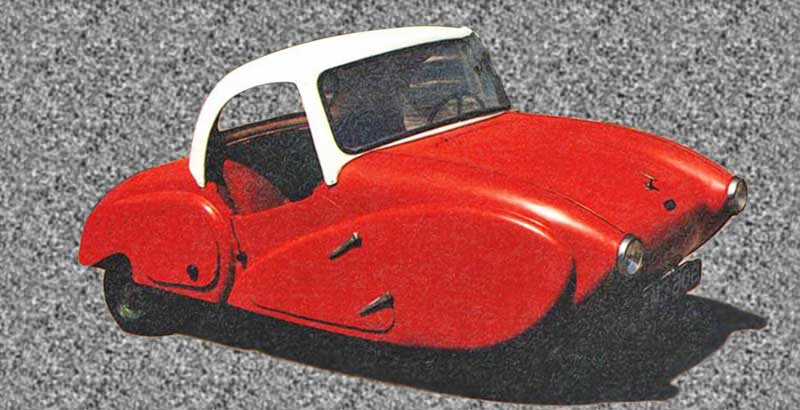The Allard Clipper

Back in the 1950s the Allard Motor Company was a small-scale manufacturer of sports cars, located in Clapham in London. Their speciality was to take big, powerful V8 engines designed for heavy American cars and mount them in lightweight bodies; the high power to weight ratio made them extremely fast with rapid acceleration. This combination allowed the owner, Sydney Allard, to win the Monte Carlo Rally in 1952; up to then the only person to do it in a self – designed car.
Why did they build the Clipper?
Sadly, by then the market for individually built cars from small manufacturers was coming to an end; much bigger companies such as Jaguar had far higher development budgets, better marketing and superior economies of scale. Allard were finding it harder and harder to make a profit and so a change of direction was needed. Micro cars were all the rage; so they decided to go from one extreme to the other, and produce the ultimate economy car.
What did it look like?
This was one of the most unusual looking cars ever produced. Designer David Gottlieb created a curvy plastic body that was definitely different; whether or not it was attractive was a matter of taste. Bizarrely, however, the single interior seat was designed to accommodate three people; they must have been very slim in those days. Not content with this, a Dickie seat was installed where the boot normally goes; this was an exterior, exposed seat which could fit two additional small passengers. Two very brave and hardy passengers. Was it powerful? The engine was a 350cc Villiers two stroke engine developing a meagre eight horsepower, which was perfectly adequate for a medium-sized motorcycle but totally inadequate for powering a small car with up to 5 occupants! Furthermore, bizarrely, the drive was through just the nearside rear wheel. What this did for roadholding and steering was never explained, but it did little to help propel the vehicle.
Was it reliable?
No. The air cooled engine overheated very easily, hardly surprising looking at the lack of ventilation that it received. Driveshafts broke regularly. In short, this strange looking vehicle was not only hopelessly underpowered but also massively unreliable. Was it a success? Hardly. The prospect of cramming a whole family into a tiny vehicle which would take ages to reach its destination (even if it actually got there) didn't impress many potential buyers. An initial run of 20 of these machines was produced but full-scale manufacture never started owing to lack of interest. Hardly surprising, really.